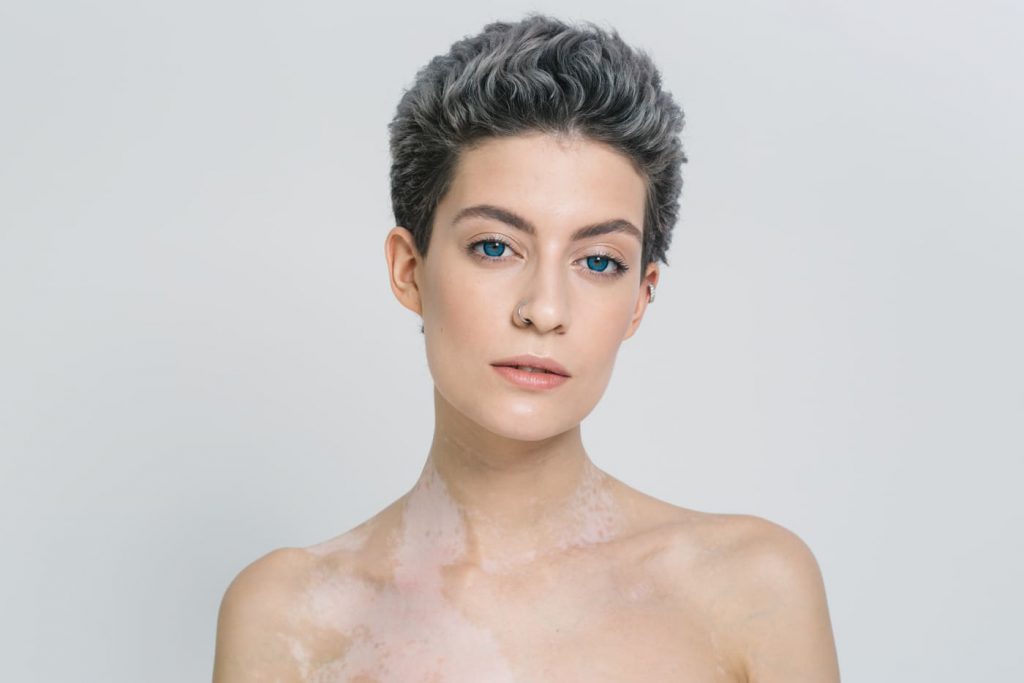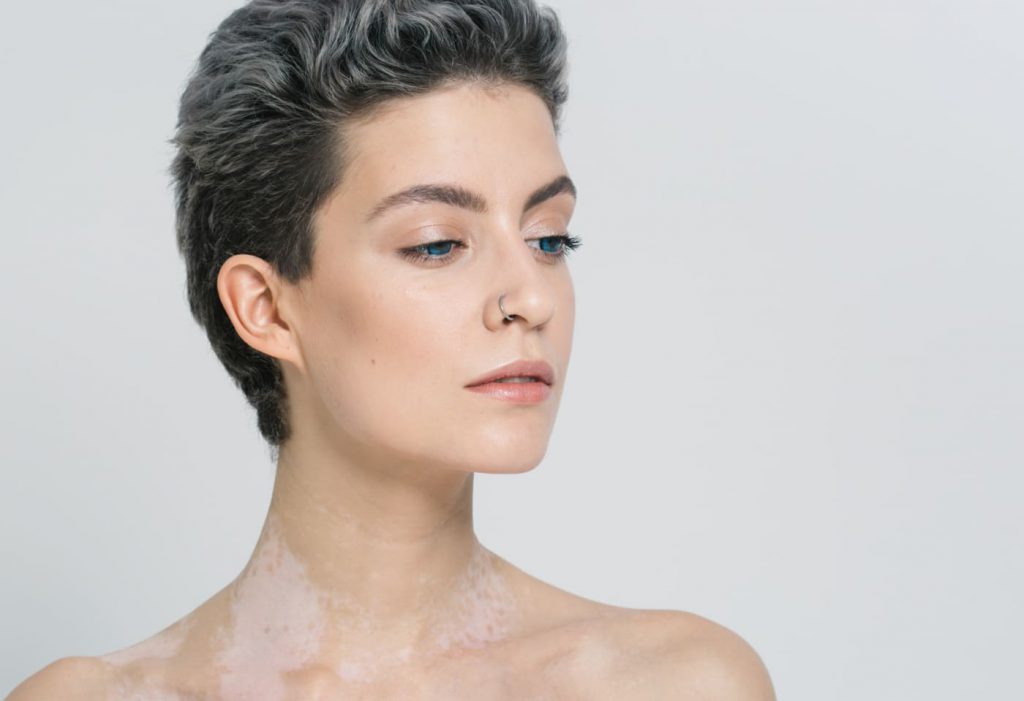Whilst vitiligo is an often unique and beautiful condition, it can be the cause of much stress and anxiety for those who suffer from it. It can also make people feel self-conscious about showing their skin in public.
But what is vitiligo and hyperpigmentation disease? What causes them and why do they spread? In this article, we’re going to answer these questions as glance beneath the skin.

What is Vitiligo?
What is vitiligo? Vitiligo is a long-term skin condition that causes pale white patches to develop on the skin. This is essentially caused by a lack of melanin in the skin, which is the pigment of the skin.
Vitiligo has been known to affect any area of the skin, but it most commonly occurs on the neck and face, hand, and in the creases between skin.
The paler areas of skin that spread and the most vulnerable to sunburn. As such, it is very important that you take extra care when out in the sunshine. In fact, we highly recommend a high sun protection factor (SPF).
Vitiligo can be a stressful condition and a cause for much anxiety.
What are the symptoms of Vitiligo?
So, what are the symptoms of vitiligo? Let’s begin with some of the most commonly affected areas of the skin:
- Fingers
- Wrists
- Mouth
- Eyes
- Armpits
- Groin
- Genitals
- Inside the mouth
Vitiligo has also been known to develop on the scale where there are hair roots. A lack of melanin in the skin can even turn the affected area of hair grey or white.
This skin condition typically begins as a pale patch of skin that eventually turns completely white. This is more prevalent in ethnicities with darker natural skin tones.
Often, the centre patch of skin will be white, with paler skin surrounding it. If there are patches of blood vessels present under the skin, then the vitiligo might appear to be a pinkish colour, as opposed to white.
With vitiligo, you will find that the patches may appear to be smooth or irregular. Sometimes they are inflamed and red in colour, whereas other times there might be a brownish discolouration (also known as hyperpigmentation).
Fortunately, vitiligo does not actually cause any real discomfort to your skin, such as dryness, however, your skin patches may occasionally feel slightly itchy (which can be a nuisance).
The severity of the condition varies drastically from person to person. Some may only suffer a few small patches, whereas others may end up with huge white patches that join up with larger areas of their skin.
In any case, there is absolutely no way of predicting how much of your skin will be affected. And, the white patches are almost always permanent.
If you are noticing white splotches forming on your skin and you are worried, do not hesitate to contact your doctor. Or alternatively, seeing a skin specialist, such as a dermatologist, might be the best approach (as your doctor may have to refer you anyway).

What causes Vitiligo?
What causes vitiligo? Well, research indicates that vitiligo is most commonly caused by a lack of pigment melanin in the skin. This pigment is produced by your skin cells (melanocytes), which gives your skin its colour. Again, this is why the lack of melanin in those with darker complexions can make their vitiligo appear to be more severe.
In essence, those suffering from vitiligo simply do not have enough working melanocytes in order to produce enough melanin for your skin. This ultimately ends up with white patches developing on your skin and hair across your body, sporadically. It isn’t as yet clear to us why melanocytes disappear from the skin—it remains one of the big questions for dermatologists to this day.
What may trigger Vitiligo?
So, what may trigger vitiligo? Are there any specific things that one should try to avoid? It is possible that vitiligo could be triggered by certain events, for example:
- Highly stressful events (e.g., giving birth)
- Skin damage (e.g., cuts / severe burns—aka the Koebner response)
- Chemical exposure (e.g., in an industrial setting)
It is important to remember that vitiligo is not caused by infection, so you cannot catch it from anyone else.
What is hyperpigmentation disease?
What is hyperpigmentation disease? Hyperpigmentation disease is a highly common and most typically harmless skin condition that causes patches of skin to become darker in colour than the rest of your skin. This darkening takes place because the skin has an excess amount of melanin, the brown pigment producer (contrary to vitiligo). This can affect people of all skin colours and ethnicities.
Hyperpigmentation is also commonly recognised as “age” or “liver” spots. These are a type of hyperpigmentation and are caused by sun damage. The small and darkened patches of skin are usually found on the hands and face of those who spend a lot of time being frequently exposed to the sun.
Why does Vitiligo spread?
OK then, why does vitiligo spread? Many believe that vitiligo is an autoimmune disease. This means that it occurs when your immune system makes a mistake and attacks a part of your body. In vitiligo, the immune system could possibly go after and destroy the melanocytes in the skin. That and some speculate that there may be one or more genes that make a person more likely to suffer from vitiligo.
Conclusion
Vitiligo and hyperpigmentation disease are similar in that they affect the pigmentation of the skin. Vitiligo is caused by a lack of melanin, whereas hyperpigmentation is caused by excess. The lack of melanin causes white spots, whereas an excess creates dark spots and patches.
Pigmentation removal is an effective treatment for removing dark spots and blemishes from the skin. Hyperpigmentation disease is a common ailment that causes dark spots to form on the skin. Having pigmentation removal gives you a means of keeping the dark pigmentation from spreading.
In any case, we hope that you have found this article helpful. Thanks for reading!

